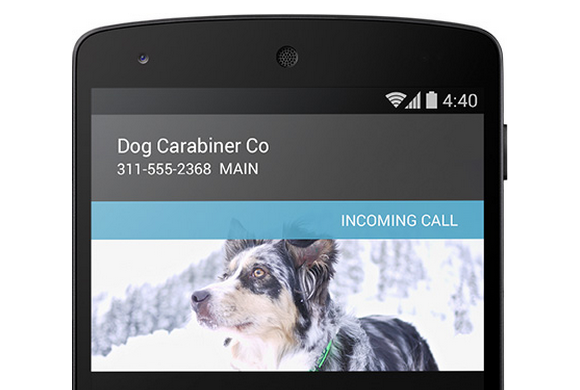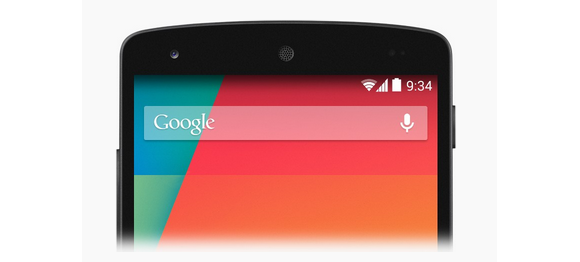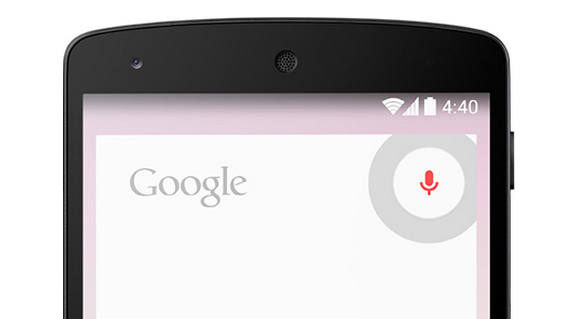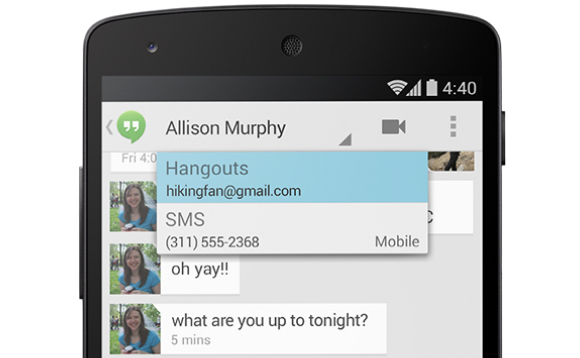Thank goodness—we can finally put to rest to all of the rumors speculation. pulled the curtain on Android 4.4 KitKat Thursday, announcing the new mobile OS will appear first in the forthcoming Nexus 5 hset, which goes on sale for $349.
ile we weren’t expecting a hefty update, some of the features announced in KitKat—like the newly revamped interface new messaging features in the Hangouts app—were on our wish list. Other features, like optimization updates to help KitKat run on low-end phones, simply remind us that is still battling all the issues that lead to device fragmentation.
Regardless, let’s walk through some of the key features of KitKat what you can expect when you finally get your hs on the new OS (whenever that is, because as we know, Android updates can take a long time to roll out).
A better phone dialer

You wouldn’t expect an overhaul of a dialer application to be a marquee feature, but has achieved the near impossible. en you’re in the dialer interface, now you can type just the first few letters of who or what you’re looking for—whether it’s a business or a friend— the dialer will immediately bring it up. You won’t have to venture into Contacts for this essential information.
If this search functionality sounds familiar, that’s because some manufacturers already offer this feature in their own version of the Android dialer. Samsung’s Touchz UI, for example, helps you find the name of the person you want to call by letting you key in the first few letters of his or her name on the number pad. So perhaps the bigger news isn’t that overhauled its dialer applications, but that it’s looking to what third-parties are doing to give consumers what they want.
KitKat also provides a novel form of caller ID, fetching the location information of unknown numbers that call you to provide a better glimpse into who might be calling where they’re located. This is an especially helpful addition when you consider the number of telemarketer calls that aren’t routed through an 800 number.
Fabulous interface makeover

Stock Android doesn’t have to be plain simple. As some developers posited in our Android retrospective, KitKat includes a slightly revamped interface design. You’ll see better use of screen real-estate in applications that utilize the new “immersive” full-screen abilities, like Music Books. And the new navigation bar is now translucent, so your wallpaper won’t be cropped by a colored menu bar. KitKat also sports a new condensed font.
Unfortunately, these interface changes won’t necessarily be exposed on non Nexus devices—meaning pretty much the entire universe of Android hardware. You’ll still be held hostage to whatever interface the manufacturer wants you to look at if you’re not using the developer edition of a phone.
It’s unclear how these design changes could affect interfaces like HTC’s Sense or Samsung’s Touchz UI, but we’re not holding our breath for substantial KitKat additions to those UIs. Third-party manufacturers will likely continue to push interfaces that match their br, for companies like Samsung that means gaudy icons blue everything.
Never carry cash again
As leaks suggested, Android 4.4. KitKat will enable llet right off the bat—without the need for your carrier’s approval. And because Android is actually storing your payment information within KitKat, you won’t have to rely on NFC security elements to make a transaction.
But that’s not all: Not only will you be able to manage your credit card information from within the Settings panel more easily pay for items anywhere NFC llet is supported, but you’ll also be able to send money to friends without annoying transaction fees.
enabled the payment settings from within the OS to help people on Verizon, T-Mobile, AT&T take advantage of its llet offerings, as those three carriers have bed together to use Isis as the default NFC-payment platform. won’t know more about how llet works in KitKat until we physically have an Android 4.4 device in our hs, but at first glance the update looks like a win.
Okay, Now

How you access Now varies from phone to phone. Do you hold down the home button? Do you swipe up from the bottom of the screen? Do you shake your phone vigorously while shouting at it? Hoping to simplify things a bit, has put Now front center by adding it to the Home screen. Now, instead of entering in some variable comm, you can just swipe from left to right to quickly access ’s hy service.
The new OS also supports launching Now by saying, “Ok ” while on the homescreen. It should be a helpful feature if your hs are tied up, or you would rather dictate than type. It’s kind of like the Touchless Controls on the Moto X, but with a few more hoops to jump through. Unfortunately the functionality is currently limited to the Nexus 5, so your current phone probably won’t get the feature. (But your next phone might!)

so, Now can now access apps when it exposes information in its search results. t’s say you’re looking for a particular restaraunt. Not only will you get the usual results, you could also get an invitation to book a reservation via, say, the OpenTable app. This function has to be supported on the app level, but suggests an exciting new expansion of ‘s digital assistant.
Indeed, by enabling easier access to Now, third-party manufacturers like Samsung won’t be able to hide it behind its own proprietary services. (Ever try to get to Now on a Galaxy S 4, only to be defaulted to S-Voice?) just wants you to stick with it for all of your queries.
Hangouts

Finally! A few days ago, updated its Hangouts app to let you send both SMS, MMS, chat messages from one application. It’s the right idea, but is merely playing catch-up, since Apple released the all-encompassing Messages application in iOS 6 over a year ago. wrote in its official blog post that its intention for combining all the communication functionality into one was for added convenience.
Faster Android for aging phones
Okay, so maybe your hardware isn’t exactly top tier compared to the ones running quad-core Snapdragon processors massive amounts of memory. understs your plight has introduced a new way for manufacturers to take advantage of all the latest Android features without the typical slow downs that plague most aging hardware.
It’s called oject Svelte it’s designed to make KitKat run smoothly efficiently even on low-end devices with as little as 512MB of RAM. As a result, Kit Kat uses 16 percent less memory than its predecessor, lly Bean, there are additional features that allow developer to disable any features that use up more memory than needed.
This may help developers make apps for low-end devices, but that doesn’t necessarily mean that all old hardware will be able to run KitKat. Not even the Galaxy Nexus will be eligible for an update, that device is barely a year a half old. However, the under-the-hood improvements should help the current generation of devices hle applications a bit better, like the now-aging Nexus 7 Nexus 4. This means an overall smoother Android experience if you’re running those devices.
Under-the-hood enhancements
You may not reap the benefits of some of the other features just yet, but that’s because they’re intended for developers to embed into applications.

If you walk to work everyday, you might appreciate that introduced a nifty new low-power step detector that enables you to track the number of steps you walk in a day without having to leave the screen on. Developers can also take advantage of system-wide captioning abilities that can display closed captions for various content, which is a nice enhancement for the hearing impaired— when you want to watch a video but don’t headphones nearby.
As for that printer collecting dust in the corner, if it’s int-compatible you can now send documents directly to it with the built-in cloud print functionality. Android apps can print anything over -Fi or from cloud-hosted services. You can also discover any available printers, change paper sizes, choose specific pages to print.


















